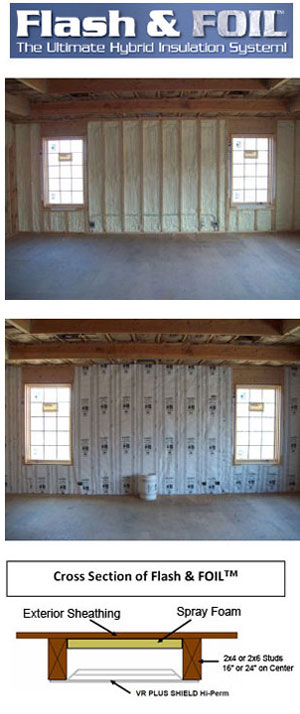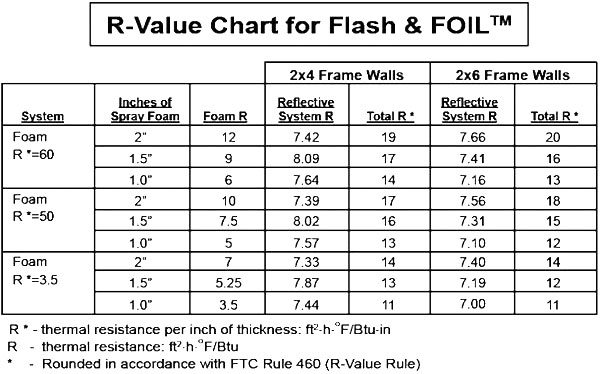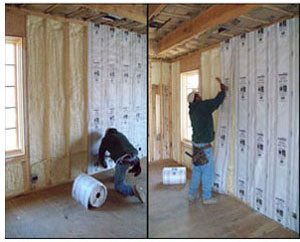
Fi-Foil Company, Inc. 
Fi-Foil's New National Solution for Frame Wall Insulation! Drop the Batt! Flash & FOIL™!Combine Fi-Foil's VR Plus Shield™ Reflective Insulation with spray foam insulation to reduce costs and increase R-values in any frame wall construction. Simply spray a desired thickness of foam on the back side of a frame wall – this seals the joints and provides thermal protection. Then apply Fi-Foil's VR Plus Shield™ Reflective Insulation to the face of the studs. The three layers of VR Plus Shield™ expand to form reflective air spaces in the remaining portion of the cavity. The result is a superior insulation that saves money! Why Replace the Fiberglass Batt with Fi-Foil's VR Plus Shield™ Reflective Insulation?


Fi-Foil's VR Plus Shield™ is a multi-layer reflective insulation intended for use in vertical wall cavities. VR Plus Shield™ is formed by an outer layer of white Kraft paper coated with polyethylene, an internal layer of aluminum foil, and a layer of Kraft paper laminated to aluminum foil. Upon installation, the layers open using internal expanders. The thickness of the air space between the internal layers and exterior wall or foam insulation is dependent on the thickness of the framing and spray foam. The Standard version is a vapor retarder and the Hi-Perm version includes small perforations for applications not requiring a vapor retarder. Tape Tab and Staple Tab versions are also available. The Tape Tab is recommended for metal framing, the Staple Tab for wood. How Reflective Insulation WorksThere are three modes of heat transfer: conduction, convection and radiation. Most insulating products resist heat transfer by forming small air or gas pockets between layers of building materials such as fiberglass, recycled paper, or foam. The small spaces restrict air movement, thereby reducing heat flow by convection. Reflective Insulation functions by forming these dead air spaces with layers of paper, plastic and aluminum. In addition reducing heat flow by convection, the high reflectivity and low emissivity of each reflective layer has the added benefit of blocking up to 97% of radiant energy, so radiation heat transfer is virtually eliminated. |